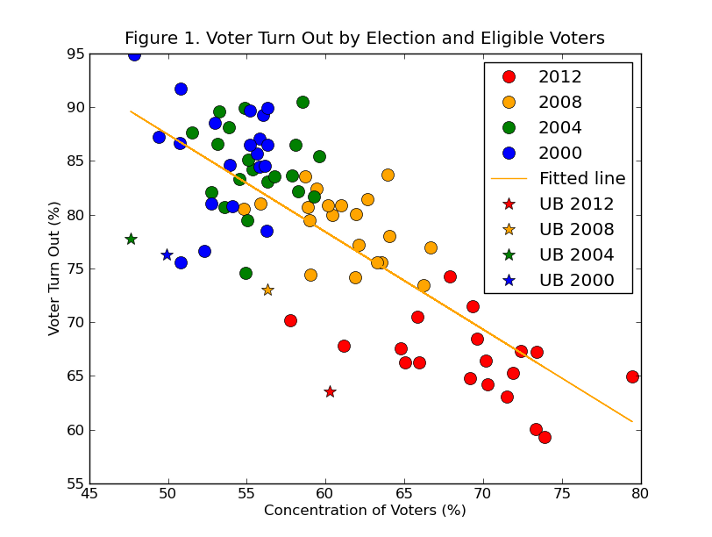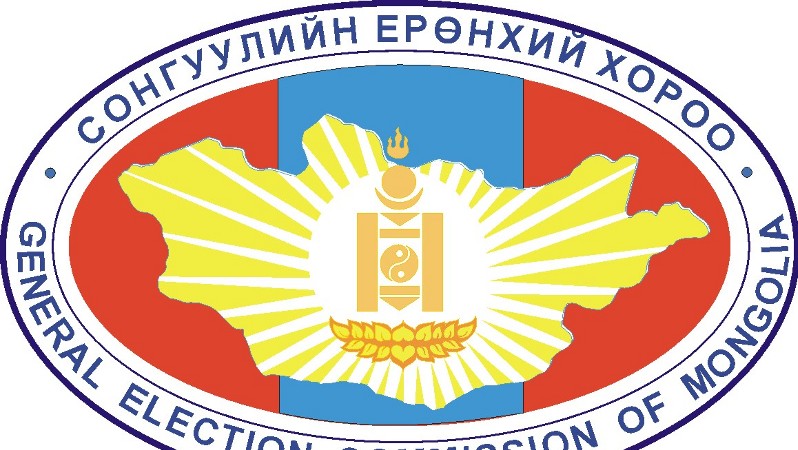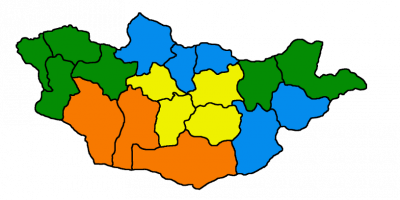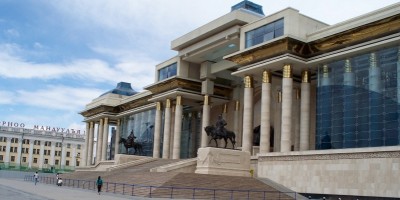The recent parliamentary election produced a troubling result. Voter turn out dropped to its lowest level in 6 elections in the democratic era from a high of 96% in 1992 to 65% in this election. Turn out has declined in each election since 1992, but this year marked the steepest decline from a previous election with approximately 12% fewer voters going to the polls.
I recently examined voter and population data in search of evidence that voter turn out has declined in part due to voters migrating out of registered districts to seek economic or educational opportunities without updating their registration in the new district. I discovered that the decline in voter turn out over the last decade has been strongly associated with an overall increase in the voting age population.
In Figure 1 voter turn out is plotted against the proportion of voting age people within a population area, or “concentration of voters.” In the 2000 and 2004 elections the concentration of voters on average increased only slightly, with the 2004 data points shifting to the right. The shift began to accelerate in 2008, and it basically exploded in 2012. On average there was a 15% increase in voter concentration from 2000 to 2012. As Figure 1 also demonstrates, this increase has coincided with Mongolia’s declining voter turn out.
 There has been great speculation about the causes of this decline from voter confusion over changes to the election laws to growing cynicism about the national political system. Without a direct survey of voters it is difficult to move beyond speculation, but Figure 1 is suggestive of the idea that for some reason new voters chose in large numbers not to participate in the most recent election. As mentioned above, I initially examined voter data with the intent of finding evidence that migration was a significant influence on turn out this year, and given the assumption that the young are more likely to change locations in search of economic or educational opportunities, this and other data are further suggestive of a migration based influence.
There has been great speculation about the causes of this decline from voter confusion over changes to the election laws to growing cynicism about the national political system. Without a direct survey of voters it is difficult to move beyond speculation, but Figure 1 is suggestive of the idea that for some reason new voters chose in large numbers not to participate in the most recent election. As mentioned above, I initially examined voter data with the intent of finding evidence that migration was a significant influence on turn out this year, and given the assumption that the young are more likely to change locations in search of economic or educational opportunities, this and other data are further suggestive of a migration based influence.
This migration hypothesis came from a few personal experiences I had on election day this year. I met two people who had traveled 30km (18mi) to the soum (county) I live in to vote because their official residence is here even though their actual residence is in the provincial capital Dalanzadgad. They moved to Dalanzadgad several years ago for better employment opportunities. Additionally, my neighbor’s daughter who resides in Ulaanbaatar as a recently graduated college student still maintains official residency status here, but unlike the other two voters, decided to not make the 560km (350mi) journey in order to vote. These examples of people having to travel to vote made me start to wonder if they were unusual or reflective of an emerging trend. As people move around seeking employment opportunities far from their hometowns, are they updating their registration to reflect their actual current residences? In other words, on election day did a significant portion of the electorate not vote because they weren’t within an easy distance of their official polling stations?
I compiled voter data from the General Election Commission website for the 2000, 2004, and 2008 elections and voter data for the 2012 elections from media sources, as well as population data from the 2000 and 2010 national censuses, for 22 voting areas in Mongolia, which included 19 provinces and the special administrative areas of Ulaanbaatar, Orkhon, and Darkhan.1 I constructed a simple formula for annual rate of population change in each area using the census data and estimated the populations in each area during the 2004, 2008, and 2012 elections.
The most striking feature of the populations in these areas was the 15 percent decline on average in population in all but five areas in the decade between 2000 and 2010. Not surprisingly the population increases occurred in the economically booming areas of Ulaanbaatar, Orkhon, Darkhan, Umnugovi, and Dornogovi. In spite of this, the majority of areas with declining populations were still able to add to their voting age population in the last two elections. Figure 2 shows this for the 2004, 2008, and 2012 elections with the majority of areas with declines in their full populations from 2008 to 2012 having positive increases in the voting age populations (top left quadrant). This could be explained by more people turning18 years old than leaving an area either by death or migration each year. Without additional data it’s difficult to calculate the different rates involved to see if the observed pattern is at least consistent with this explanation.
 We would also see a similar pattern if people were leaving these areas without deregistering. In such a scenario people would leave the official population at a faster rate than they are leaving the voter registration lists. This would create artificially high voter concentrations in these areas, but it would also conceivably increase the percentage of voters registered but unable to vote due to being in a distant location on election day. If the association in Figure 1 were to hold true, then if these voters were given the ability to vote, say through an absentee ballot system, and accounted for in the voter concentration of each area, then we’d expect the plotted points for 2008 and 2012 to shift upwards and to the left, increasing average turn out.
We would also see a similar pattern if people were leaving these areas without deregistering. In such a scenario people would leave the official population at a faster rate than they are leaving the voter registration lists. This would create artificially high voter concentrations in these areas, but it would also conceivably increase the percentage of voters registered but unable to vote due to being in a distant location on election day. If the association in Figure 1 were to hold true, then if these voters were given the ability to vote, say through an absentee ballot system, and accounted for in the voter concentration of each area, then we’d expect the plotted points for 2008 and 2012 to shift upwards and to the left, increasing average turn out.
There may be more explanations that fit the patterns in the data, but at this point I can at the very least write that the pattern is odd. The concentration of voters in Mongolia has ballooned over the last 12 years, and this by itself seems to account for a significant portion of the decline in voter turnout. A reasonable assumption is that much of this is driven by young voters increasingly not participating in elections, but this may not even be a safe assumption without a better understanding of the composition of the various populations and their respective rates of change, especially if the voter concentration numbers are artificially high due to a divergence in population and voter registration numbers.
An additional piece of anecdotal evidence to support the contention that migration is a significant factor in the decline in voter turn out is that in 2010 the National Statistics Office of Mongolia counted approximately 107,000 Mongolia’s living abroad for the census. Assuming that the concentration of voters in this population is the same as the average concentration for Mongolia (and for simplicity static between 2010 and 2012), this would mean 67,000 people were eligible to vote in the election and were counted on the voting registration lists. This is probably an underestimate, though, because we’d expect the population of Mongolians abroad to be mostly made up of voting age adults and the overall population to have increased in the last two years since the census. In this election for the first time Mongolians abroad were able to vote, but no more than 2,000 did given the availability of polling stations around the world. That leaves roughly 65,000 people who did not vote which represents approximately 3.5% of the 1.8 million registered voters. Unfortunately I do not have data for Mongolians abroad in 2000, so I cannot say if this is more or less than previous elections. However, it is a significant portion of the voting age population, and if it has grown significantly over the last decade, average turn out would have been negatively affected by this change. Domestic migration absolutely dwarfs international migration, so a similar pattern of being unable to vote as a result of being in the wrong polling area on election day could have an even larger effect.
Although speculations on voter turn out that hinge on voter cynicism, confusion, or apathy seem reasonable at first blush, I am left with a gnawing feeling that they may be only part of the story. If migration is having a significant influence on voter turn out, then that actually represents a more serious problem. Without an absentee balloting system, then significant percentages of the population are being inadvertently disenfranchised. I think the trend of declining turn out is here to stay, but it may be happening much faster than it should otherwise due to rapid social and economic change exacerbating a systemic flaw in the election process. A thorough survey of the voting age population would go a long way in establishing the primary causes of this year’s precipitous decline in turn out, and the patterns revealed in Figures 1 and 2 suggest such a survey would potentially yield interesting results.
<This article was originally published here: http://blogs.ubc.ca/mongolia/2012/guest-post-voter-turn-out/>
Footnotes
1. National Statistics Office of Mongolia, “Хүн ам, орон сууцны 2010 оны улсын тооллогын үр дүн,” 2010, http://www.toollogo2010.mn/doc/Main%20results_20110615_to%20EZBH_for%20print.pdf, accessed 7/14/2012
General Election Commission of Mongolia, “ УИХ-н Сонгууль – 2000, 2004, 2008 он,” 2000-2008, http://www.gec.gov.mn/parliamentary_election/, accessed 6/15/2012.
Toim.orloo.info, “Сонгогчдын ирц 65.24 хувьтай байлаа,” 2012, http://toim.orloo.info/links.php?weblink=http://politics.time.mn/content/14781.shtml, accessed 7/11/2012.



